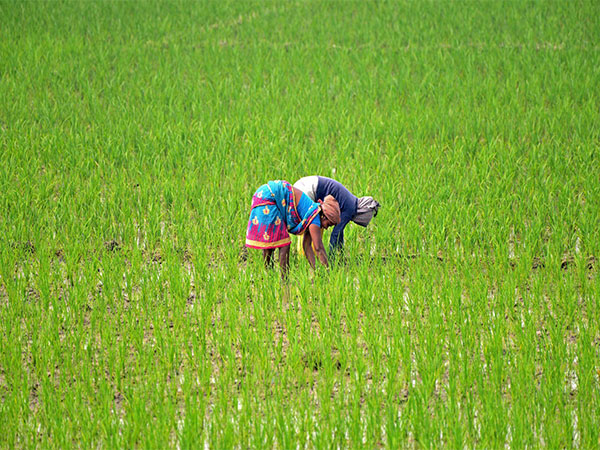New Delhi [India], July 17 (ANI): Despite rainfall remaining 2 per cent below the LPA, as of July 15, the overall sown area of Kharif crops has improved by 10.3 per cent as compared to last year. A report by Bank of Baroda research says the overall cumulative rainfall this year remains marginally on the lower side so far at 287.7 mm, compared with 293.5mm last year.
During this year’s monsoon season, the sown area for rice has increased by 20.7 per cent, pulses by 26 per cent, and oilseeds by 22 per cent, Bank of Baroda observed in its report.
Within the pulses category, the acreage of Arhar (Toor Daal) has seen a steep rise, significantly contributing to the overall increase. Urdbean has also seen a 9 per cent increase, while other pulses like moong bean have recorded declines. Among oilseeds, soybean has seen a substantial jump of 31 per cent, while groundnut has seen a slight decrease of 0.2 per cent.
However, the sown area for coarse cereals and jute has decreased by 7 per cent and 6.5 per cent, respectively. Notably, the area sown for Bajra and Jowar has declined by 43.5 per cent and 14.5 per cent, respectively, whereas the acreage for small millets, maize, and ragi has increased.
Additionally, the sown area for cotton and sugarcane has also risen, as per the observation.
The sown area of Paddy in 2023-24 was 95.8 lakh hectares compared to 115.6 lakh hectares, an increase of 20.7 per cent at 62.3 lakh hectares. The sown area of pulses increased by 26 per cent in the current sowing season compared to last year’s 49.5 lakh hectares.
The report further added that despite the early onset of the Southwest monsoon across India, cumulative rainfall remains 2 per cent below the Long Period Average (LPA) as of July 15, 2024.
The second week of July witnessed a noticeable shortfall in the monsoon, which saw only 42.7 millimetres (MM) of rainfall compared to the first week’s 79.1mm, following 137.5mm in June, the report highlighted.
The 25 meteorological sub-divisions out of 36, which cover 69 per cent of the country have received normal or above-normal rainfall, while 12 states are experiencing a rainfall deficit, the research conducted by Sonal Badhan the economist at the bank said.
Regionally, Central India reported a slight deviation from the LPA at minus 4 per cent, whereas the South Peninsula experienced a significant surplus with a 13 per cent increase in rainfall. This marginal deviation from the LPA has positively impacted the sown area, leading to notable increases in the acreage of paddy, pulses, and oilseeds compared to last year, the report observed.
The Central, Western, and North-Eastern regions have received normal rainfall. Tamil Nadu and Ladakh have reported excesses in the monsoon while some states such as Kerala, Odisha, Chhattisgarh, Jharkhand, Haryana, Punjab, Himachal Pradesh, and Jammu & Kashmir have experienced deficient rainfall.
Although the report highlights the concern on reservoir levels in the country the current storage stands at 26 per cent of total capacity in India compared to the 33 per cent last year.
As the majority of sowing occurs in July and August, the distribution of rainfall in the coming weeks will be crucial for the agricultural sector, the report further added.
(ANI)
Disclaimer: This story is auto-generated from a syndicated feed of ANI; only the image & headline may have been reworked by News Services Division of World News Network Inc Ltd and Palghar News and Pune News and World News
HINDI, MARATHI, GUJARATI, TAMIL, TELUGU, BENGALI, KANNADA, ORIYA, PUNJABI, URDU, MALAYALAM
For more details and packages











